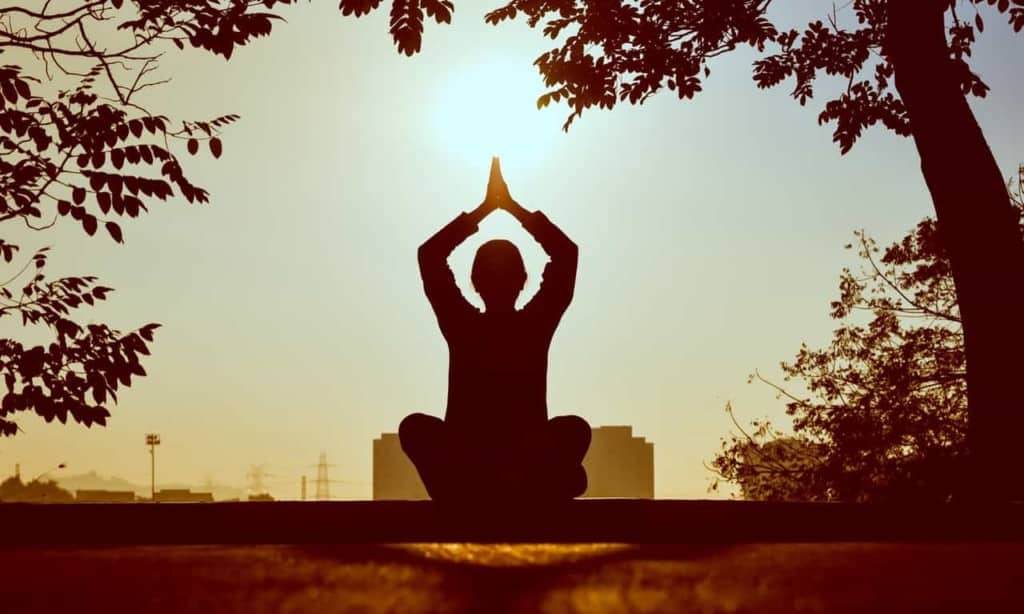For those who have never tried meditation, it can seem like an unproductive, strange way to spend twenty or so minutes of your day. However, meditation offers a slew of benefits to anyone on the planet, and it costs nothing to start up a daily practice.
By meditating regularly, you can increase your vibrational energy, or life force, and even retrain your brain to think positively. If you need some help getting started with meditation, refer to these tips for guidance.
11 Meditation Tips for Beginners
1. Don’t get frustrated with your brain.
In the beginning, you will probably have a hard time just sitting quietly, even for five or ten minutes at a time. It takes time to adjust, as meditation is a foreign concept to many people. However, as long as you make a conscious effort to tune out from everything and go within, you will soon find that the restlessness slowly melts away.
2. Start out with five to twenty minutes each day.
Go easy on yourself when you begin a regular meditation practice – remember, slow and steady wins the race. Meditation is a highly personal journey, and you have to go at your own pace. Do what feels comfortable to you; if you only have ten minutes in the morning before work to meditate, that’s ten minutes you spent relaxing your brain and improving your relationship with yourself.
3. Go to a peaceful place to practice.
This could be anywhere you feel most connected to the stillness within you and the universe – your backyard, the beach, your bedroom, or a quiet meadow in the woods. While you can meditate anywhere, some places will resonate with you more than others, so make sure you choose a spot where you can totally let go and experience the true serenity within your soul.
4. View meditation as a tool to help you grow, not as a chore.
If you look at meditation as just something to knock off your to-do list, you won’t get to experience the full range of benefits that meditation provides. Try to not set aside times to meditate, and instead choose to practice when you really feel like it. Meditate at times when your soul truly longs for it, so that it becomes a method of spiritual growth, and not just a task you need to get done each day.
5. There’s no “right” way to meditate.
A lot of people give up their practice because they can’t completely quiet their mind, they get bored, or they don’t see the benefits of meditation right away. Just because you haven’t reached a state of pure nirvana yet, doesn’t mean that you should judge your personal journey with spirituality. Don’t compare yourself to others or obsess about getting things just right; instead, focus on letting the universal energy flow through you, and give yourself praise after every meditation session.
6. Focus on your breathing.
The breath represents your life force and connects all of us on Earth. Through our breath, we can channel higher energy and enter a totally new state of being. Take long, deep breaths all the way down into your belly, and picture each breath going deeper within you, healing your entire body. Breathing forms the cornerstone of successful meditation practice. Furthermore, it will help you increase your focus and awareness of your thoughts.
7. Don’t label your thoughts as “good” or “bad.”
Let the thoughts enter your brain, but avoid attaching them to labels. Just let them move freely through your mind, observe them, and let them pass. Assigning labels to anything causes our brain to form judgments, and therefore deeply engrains certain thoughts and feelings within us about that label. Learn to just observe everything in your inner and outer world as if you had come from another planet and had no idea what “good” or “bad” even looked like.
8. Create a meditation friendly environment.
If you practice in your room, you can light candles or incense, put on calming music, or rub your favorite essential oils on your skin to help you transition into a peaceful state of mind. Make your surroundings work for you, and add to them if necessary. If you go outside to meditate, you can still bring crystals or whatever is symbolic to you to guide you into relaxation.
9. Remove any distractions.
In just the same way as you can add tranquility into your environment, you can also remove anything that hinders your practice. Get rid of your phone, computer, or other electronic devices if they impair your connection to source energy. Remove any other stressors from your room, such as to-do lists, bills you have to pay, or schoolwork you need to get done. You can come back to those any time after your meditation practice but just focus on clearing your space so you can get the most out of what you’re doing in the present moment – meditating.
10. Try different forms of meditation.
Not everyone enjoys just sitting in lotus pose, and believe it or not, you can meditate in many other ways. Yoga is also a form of meditation. This practice involves holding certain poses and flowing through different movements to achieve mind-body-soul unity. You can also engage in “walking meditation,” in which you fully focus on the act of walking, and helps you develop mindfulness. You can test out different styles, or combine them, to find one that relaxes you the most.
11. Check out guided meditation videos.
You can find many of these videos on YouTube, or even popular yoga websites where teachers help you adjust to regular meditation practice. It can be difficult in the beginning to silence your mind, so having someone guide you through the process can make it easier. While you don’t need a teacher to meditate, others can offer you advice and techniques to help you get started on the right foot.
Final Thoughts on Trying Meditation
Join the discussion: What meditation tips can you share with beginners? Share in the conversation below! Or, head over to Facebook to join the discussion.


















